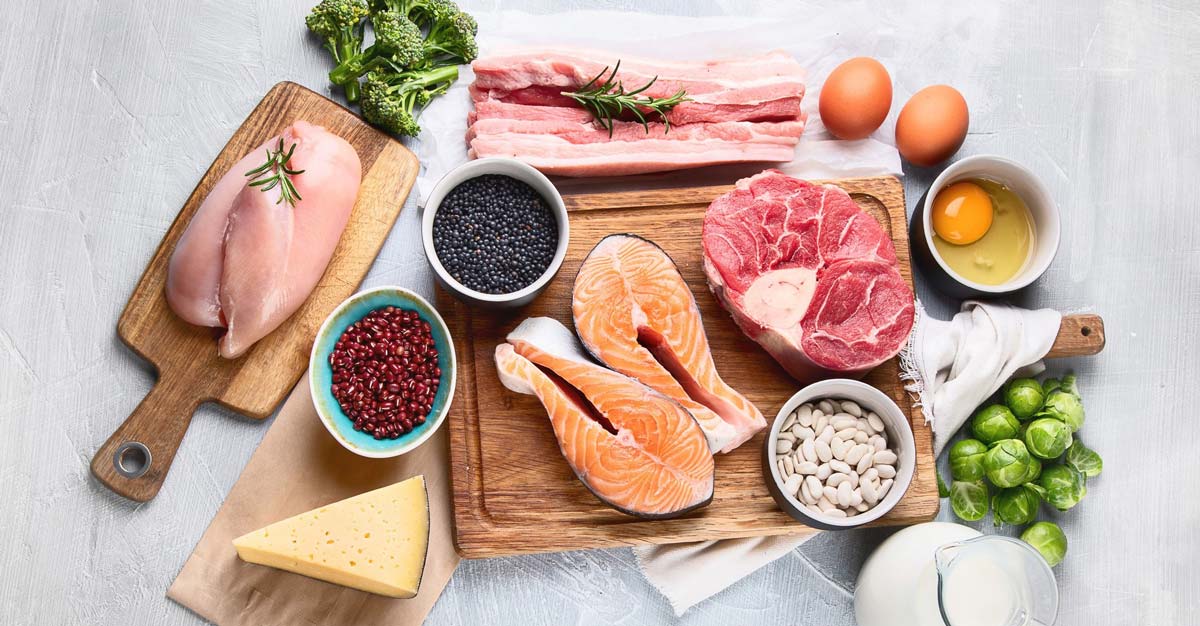The Rule of 10% Body Fat is a widely accepted guideline for fitness enthusiasts looking to understand their body composition. It suggests that 10% body fat should be the lowest limit for both men and women for health reasons. Not only does reaching this number provide aesthetic benefits, it can also help you maintain your overall physical health. Training in order to achieve and maintain 10% body fat requires dedication, motivation and discipline as well as nutrition and exercise programs tailored to your individual needs.
What is the Rule of 10% Body Fat?
Achieving and maintaining 10% body fat is a goal for many, as it can mean better health, improved appearance, and increased performance. Known as the “Rule of 10%Body Fat”, this is a guideline that most athletes use to reach peak physical performance
The Rule of 10% Body Fat is an essential factor in determining your overall health. This rule states that a healthy individual should have a body fat percentage of no more than 10%. It is important to note that this number varies depending on age, gender and lifestyle.
Body fat can be determined by various methods such as body composition scans, skinfold measurements and hydrostatic weighing. These tests will help you track your body fat percentage over time so you can make sure it remains within the acceptable range. Many experts recommend regularly monitoring your body fat with one or more of these tests to ensure you’re maintaining optimal levels for your physical health.
Having too much or too little body fat can lead to serious health conditions such as diabetes, heart disease and stroke, among other issues.
Achieving 10% Body Fat: Golden Rules To Reduce Fat Fast and Stay Lean
#Rule No.: 1 You must be calorie deficit to lose body fat.
Calorie deficit is a key factor in the process of losing body fat. The rule of 10%body fat states that you must be in a calorie deficit to lose fat and maintain it permanently. Therefore, regardless of your health goals, understanding how to achieve and maintain a calorie deficit should be your number one priority.
Calorie deficits can be achieved through dieting or exercising, both resulting in the same outcome: burning more calories than you consume each day.
Dieting involves reducing the number of calories eaten while exercising increases the amount burned by increasing physical activity levels. Both methods are equally effective when done correctly and often complement each other for best results when trying to lose weight or body fat specifically.
When creating a calorie deficit diet plan, there are certain foods that should be included in order to ensure that your nutritional needs are being met. Eating lean proteins such as chicken and fish will help keep you full and provide essential amino acids for muscle growth and repair. Complex carbohydrates like quinoa, oats, and sweet potatoes will provide steady energy throughout the day, while also helping increase satiety levels.

#Rule No.: 2 Success with Protein
Getting your protein intake to the right level is essential for health and fitness. A good rule of thumb is called the Rule of 10%Body Fat, which states that if you want to maintain a body fat percentage less than 10%, then you need to consume at least 2-2.8 gram of protein per day for every pound of body weight.
If reaching your protein goal seems daunting, don’t worry- there are plenty of simple strategies you can use to make sure you’re getting enough. Start by increasing the amount of lean meats, eggs, nuts, and legumes in your diet. You may also want to consider adding a whey or vegan protein powder into your smoothies or post-workout shakes. With just a few changes, it’s easy to reach and exceed your daily protein needs!
#Rule No.: 3 Substitute Cardio For Resistance Training
The Rule of 10% Body Fat is a concept that has been adopted by many fitness professionals in recent years. It states that, in order to achieve a leaner body composition, we must prioritize resistance training over cardio. This means that if you want to reduce your body fat percentage and increase muscle tone, then you should focus on lifting weights rather than running or swimming.
Resistance training helps build stronger muscles and bones while increasing metabolic activity which is essential for burning fat. When combined with a proper diet, resistance training can result in significant changes in body composition within as little as 10% weeks. In addition to helping you get leaner faster, this type of exercise also helps boost energy levels and improve overall health markers such as blood pressure and cholesterol levels.

#Rule No.: 4 Control Your Stress Levels
Stress can be an unintentional hindrance to any weight-loss plan. Too much stress can result in poor decisions and lack of motivation, leading to unhealthy food choices and a sedentary lifestyle. This can be especially damaging when trying to achieve the goal of dropping below the 10% body fat mark.
The Rule of 10% Body Fat offers several steps for controlling stress levels, such as creating a clear goal and then setting realistic expectations in order to achieve it. It also encourages mindfulness, which helps reduce the physical symptoms of stress such as headaches or muscle tension by allowing individuals to stay focused on their goals without getting distracted by other factors.
#Rule No.: 5 HIIT Training Can Help You Burn More Calorie
High intensity interval training (HIIT) is one of the most effective forms of physical activity to burn calories and reduce body fat. According to a popular fitness rule known as ‘The Rule of 10’, you can use HIIT workouts to burn 10% body fat with relative ease.
By regularly performing HIIT exercises, you can significantly increase your calorie burning potential and develop lean muscle mass at the same time. With just a few HIIT sessions per week, you can make serious progress towards achieving your health and fitness goals. HIIT training requires short bursts of high-intensity effort followed by rest periods which makes it easier than traditional endurance exercises like running or cycling for long distances.
HIIT training can be done in a variety of ways, but running sprints, biking, rowing, and prowler are all excellent. Try a sprint protocol of 20-40 seconds at maximum effort, followed by 3 minutes of recovery. Rep 10-15 times.
Moreover, its intense nature helps raise your metabolic rate which means that even after the workout ends, you will continue to burn more calories for hours after exercising.

Are there any side effects of having 10% body fat?
This is an important question for those looking to get into shape and maintain a healthy lifestyle. While having 10% body fat can be beneficial for overall health, it is also important to understand what potential risks may come along with it.
Achieving and maintaining 10% body fat can require intense dieting, which can have its own risks including nutrient deficiencies and disordered eating patterns. Additionally, the physical exercise associated with achieving this level of fitness could cause strain on the joints due to increased activity levels. An individual should make sure they are adequately rest in between workouts or risk further injury.
It is important to remember that overall health should be taken into consideration when attempting to achieve a low body fat percentage.
Answers You Want To Know
- How can I apply the Rule of 10% to my diet and exercise regimen?
To reach your body fat percentage goal of 10%, you’ll need to reduce your body weight down to a lower weight, and then get it back up to that target weight by incorporating a combination of diet and exercise.
Your diet should aim to reduce your body fat percentage down to 10% or below, while incorporating high-intensity interval training (HIIT), resistance training, and cardio into your routine. Make sure to get adequate rest and nutrition, including lean proteins, healthy fats, and complex carbohydrates.
- What are some foods that I should avoid if I want to reduce bodyfat?
Some foods that you should avoid if you want to reduce body fat are:
– Refined carbohydrates and added sugars
– Processed foods, fried foods, and sugary drinks
– Trans fats and saturated fats
– Instead, try opting for lean proteins, whole grains, fruits, vegetables, and healthy fats.
- How do interval training and strength training work together for weight loss?
Both interval training and strength training are effective weight loss methods. However, they work together to help you lose weight in a faster and more efficient way.
When you do interval training, you alternate bursts of high-intensity exercise with rest periods. This way, your body gets a good calorie-burning workout while also resting and recovering. This technique can help you burn calories even when you’re not doing any strength training.
In addition, strength training builds muscle. Muscle burns more calories than fat, so adding muscle to your body can help you lose weight faster. Strength training can also help increase your metabolism, which can result in faster weight loss on its own. Combining interval training and strength training can make the process even more effective.
- Can dietary supplements help me reach my fitness goals faster?
Yes, dietary supplements can help you reach your fitness goals faster. However, don’t blindly use them as the sole means of achieving them. Make sure to research any supplement before using it and consult a doctor if necessary. Dietary supplements can fill in nutritional gaps and provide additional energy for workouts, but cannot replace healthy eating and exercise habits when it comes to achieving optimal body composition.
Words From Sheru Classic
The Rule of 10% Body Fat is an effective and proven method to reduce fat quickly and maintain a lean physique. By exercising regularly, eating healthy, and reducing stress levels, you can achieve great results in a relatively short time. With focus and commitment, anyone can adhere to this rule and enjoy the benefits of improved body composition. As an added benefit, The Rule of 10% also provides enhanced energy, improved sleep quality, and better overall health.



